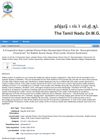Search
for
Sort by
Research
60-90 / 536 resultsresearch Androgenetic Alopecia Risk Identified with Genetic Test

research Procedures in Cosmetic Dermatology: Hair Restoration
The book teaches modern, non-invasive hair restoration techniques for common hair loss.

research Is There a Place for Scalp Flap in Modern Hair Restoration Surgery?
Scalp flaps in hair restoration surgery provide immediate results, prevent temporal hair loss, offer great density, and allow for large hair re-allocation, making them a popular choice, especially in Asian countries.

research Hair Restoration: Understanding Alopecia and Modern Techniques
Hair restoration has evolved to use follicular units for more natural results, moving away from older methods like large plug grafts and scalp reductions.
research Follicular Unit Extraction Hair Transplant
FUE is a modern hair transplant method that avoids large scars and is good for short hair.

research Postmillennial Breast Cancer Photo-Narratives: Technologized Terrain
The document concludes that modern photo stories help represent and challenge how breast cancer affects women's identities and societal norms.
research Applications of the Regenerative Capacity of Platelets in Modern Medicine
PRP therapy shows promise in healing and tissue repair across various medical fields but needs more research for standardization and optimization.

research Hair Restoration Surgery: Reliable Methods for Restoring Hair
Hair restoration surgery, using modern techniques like FUE and FUT, effectively restores hair with minimal recovery time and high success rate.

research Critical Evaluation of the Concept of Genetics in Ayurveda with Special Reference to Eight Undesired Body Types (Ashta Nindit)
Ayurveda's descriptions of genetic disorders align with modern genetic understanding.
research 10th Annual Meeting of the Italian Society for Hair Restoration, Modena, Italy, June 2-4, 2005

research 12
The journal invites various individuals to publish articles on modern medicine for global knowledge exchange.

research A Review on Forensic Toxicological Analysis of Drugs in Hair Using Various Instrumental Techniques
Hair analysis is better than urine and blood for detecting past drug use.

research Further Aspects of Hair Transplantation
The document concludes that hair transplant clinics should focus on effective marketing, online presence, and quality patient care, while the industry should promote high standards and education through organizations like FUE Europe.
research Excess Hair: Physical And Pharmacological Treatments
Laser and Eflornithine are more effective for hair removal than traditional methods.

research Beard Hair Transplantation
Beard hair transplantation is generally satisfying, requires 250-800 grafts, uses FUE to avoid scars, needs careful planning, has some risks, and hair regrowth starts after 4-6 months.

research Platelet-Rich Plasma and Hair Regeneration
Platelet-rich plasma therapy might help treat some kinds of hair loss.
research Impact of Constant Light Exposure During Pregnancy on Skin of Neonatal New Zealand Rabbits: Structural and Ultrastructural Study
Constant light exposure during pregnancy changes newborn rabbits' skin, affecting hair follicles, skin thickness, and pigment cells.

research Management of Colorectal Cancer Using Nanocarrier-Based Drug Delivery for Herbal Bioactives: Current and Emerging Approaches
Nanocarriers can improve the effectiveness of herbal medicines in treating colorectal cancer.

research Bioactive Metabolites of Ganoderma Lucidum: Factors, Mechanism, and Broad Spectrum Therapeutic Potential
Ganoderma lucidum, a medicinal mushroom, contains compounds that have potential health benefits like fighting cancer, boosting immunity, and treating various diseases.

research A Prospective Open Labelled Phase-II Non-Randomized Clinical Trial on Karunjchirakam Chooranam for Poly Cystic Ovarian Syndrome
Karunjchirakam Chooranam significantly improved symptoms in most PCOS cases.

research A Brief Overview on the Concept of Palityaw.s.r. Premature Hair Greying
Ayurveda suggests natural treatments for premature hair greying caused by an imbalance of Pitta dosha.

research Drug Repositioning: Current Approaches and Their Implications in the Precision Medicine Era
Drug repositioning is becoming more targeted and efficient with new technologies, offering personalized treatment options and growing interest in the field.
research Finasteride

research Indian Journal of Plastic Surgery: A Special Issue on Hair Restoration
Hair transplant techniques have improved and become less invasive over time, but there are concerns about unregulated centers. The market is growing, with potential for more growth in India due to increasing hair loss cases. New technologies like robotic transplants are promising for the future. Surgeons are encouraged to prioritize patient safety and understand the science behind their techniques.

research Clinical Study on the Efficacy and Tolerability of a Topical Regenerative Treatment in Patients With Telogen Effluvium and Mild Androgenetic Alopecia
The topical treatment reduced hair loss and improved hair growth in patients with certain types of hair loss.

research Botanical Extracts in Cosmetics and Pharmaceuticals: Historical Use, Regulatory Approaches, and Extraction Processes
Botanical extracts are increasingly important in cosmetics and drugs for their effectiveness and safety, backed by traditional use and scientific evidence.
![Computation and Comparison of the Drug Efficacy Indices [Q(VPK)] of Certain Ayurvedic Hair Care Formulations](/images/research/9fec7798-b717-41b6-9f07-bab38c892fe2/small/21723.jpg)
research Computation and Comparison of the Drug Efficacy Indices [Q(VPK)] of Certain Ayurvedic Hair Care Formulations
The research predicted the effectiveness of Ayurvedic hair care products by calculating their Drug Efficacy Indices.

research A Review Study of Kriya Sharir of Hair
The review suggests that lifestyle, diet, and environment affect hair loss, and Ayurveda offers ways to maintain hair health.

research The Density Issue in Hair Transplantation
Mini-micrografting in hair transplants can give similar density to older methods with fewer sessions.